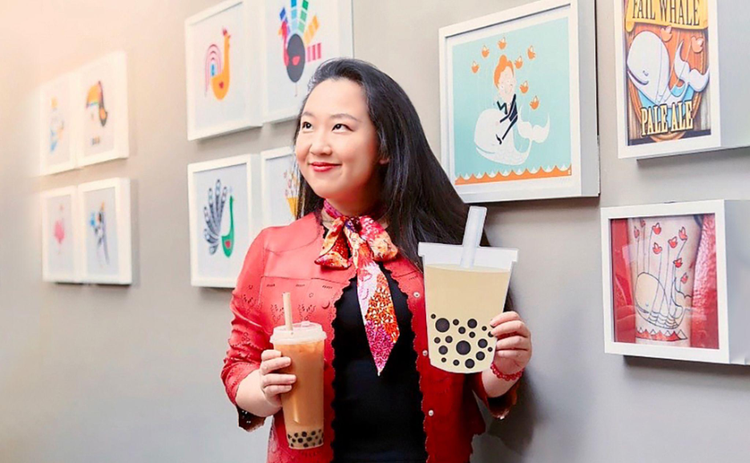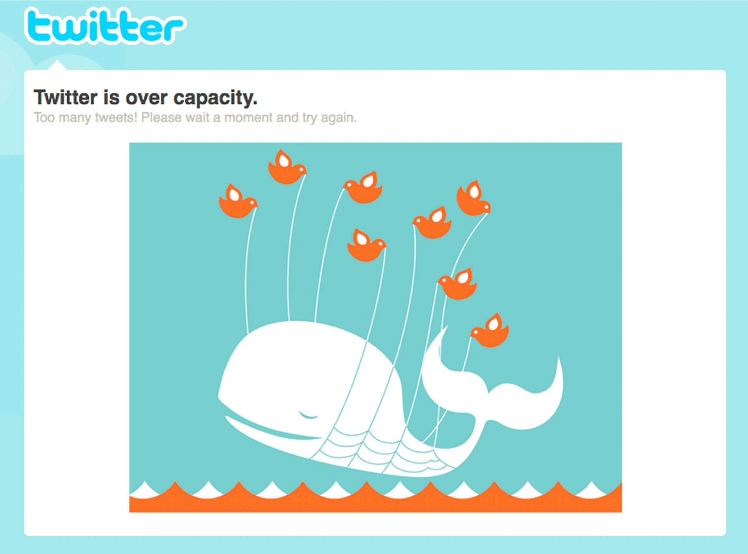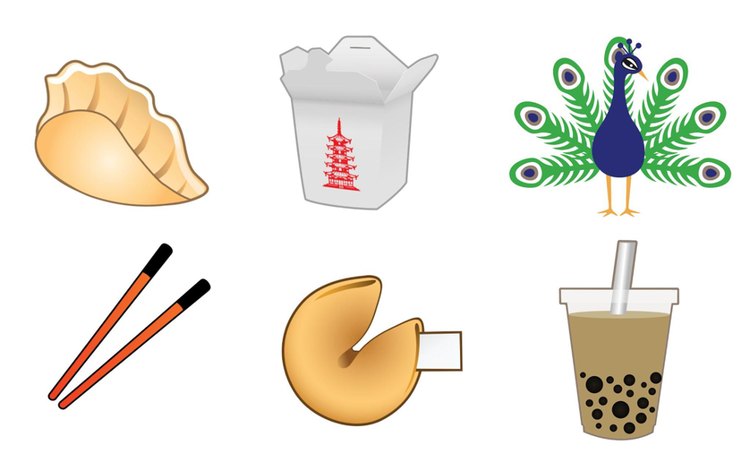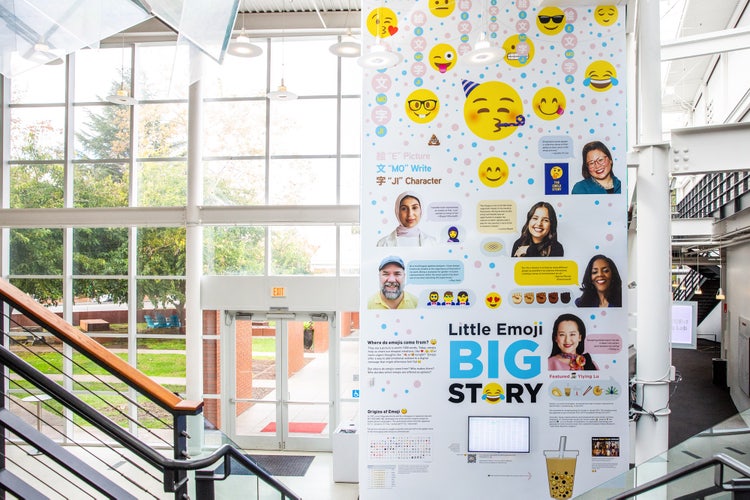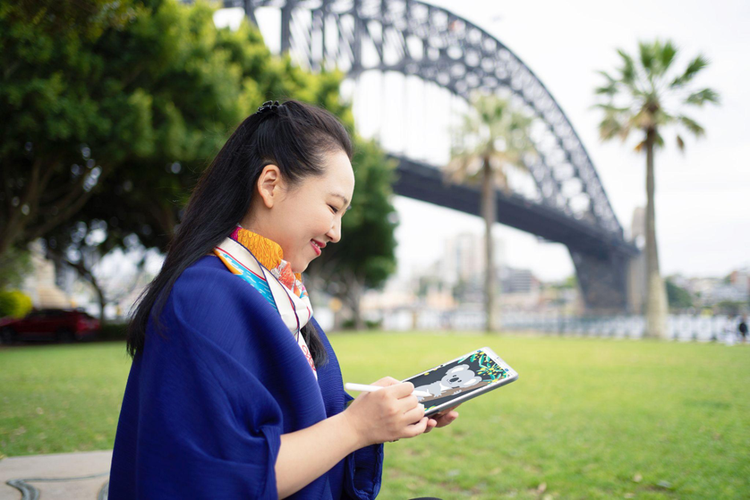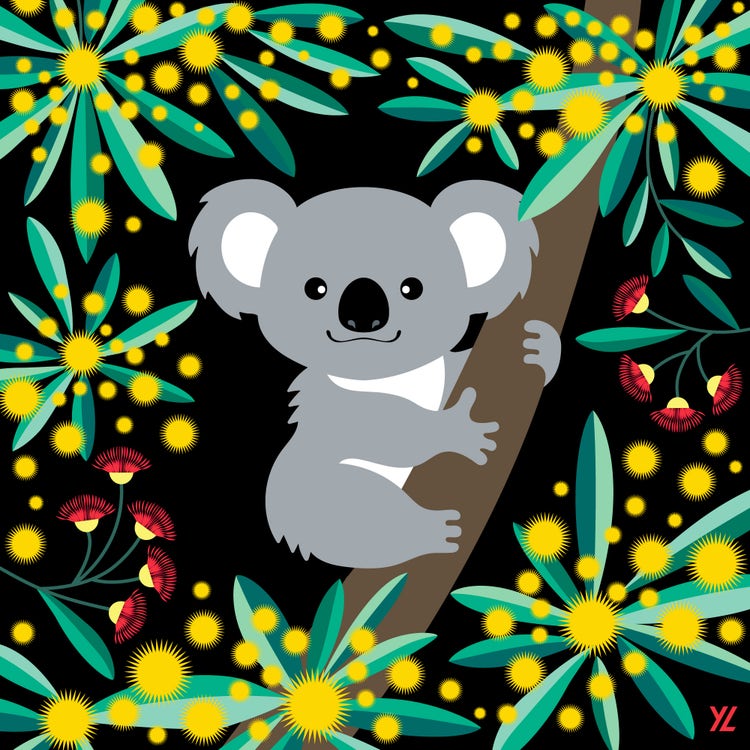When Yiying Lu was six months old, her grandfather approached her father with a serious concern: they needed to change the baby’s name.
“My family originally gave me a name that combined the Chinese characters for ‘pretty’ 妍 and ‘creative’ 颖,” explains Lu. “But my grandfather became concerned that the name focused too much on the surface instead of what’s inside. That’s why my family changed my name to Yiying, which means ‘happy’ 怡 and ‘creative’ 颖.”
Today, Lu embodies her name through her bold, colorful, and cheerful digital graphics. She’s the artist behind the Twitter Fail Whale — the whimsical whale representing Twitter service outages for five years. She’s also created several popular emojis, including the dumpling, chopsticks, and boba tea. Clients from Disney to Apple and Scholastic to the United Nations turn to Lu for creative branding campaigns and inspirational talks and workshops.
As a long-time Adobe Global Creative Ambassador and Advisor, Lu sees creativity and innovation as a fundamental way for businesses to connect with people, engage worldwide users, and ultimately create more business and cultural values with the global community. That’s why demonstrating diversity and inclusion through art is such an important motivation for her designs.
"In many ways, the biggest innovations in digital art — projection mapping, NFTs, Web 3.0 — are mostly represented by male artists,” says Lu. “They’re all fantastic artists, but I think there’s room for greater diversity that will bring new energy and voices to the space and help more audiences feel seen through art.”
Bringing visibility to communities through emojis — during Asian American & Pacific Islander Heritage Month and beyond
Emojis are more popular than ever as a way to convey emotion, tone, and mood in digital conversations. According to Adobe’s Future of Creativity: 2022 U.S. Emoji Trend Report, 91 percent of U.S. emoji users agree that emojis make it easier to express themselves. But to truly express themselves, people need emojis that reflect their identities.
Lu designed her first emoji out of a simple desire to text her friend a dumpling. While messaging about plans to eat together, Lu wanted to emphasize her excitement by including a dumpling emoji. To her surprise, an emoji of a dumpling — a very common and iconic food in her life — did not exist.
“Emojis are more than just fun little pieces of art,” says Lu. “They can be an impactful representation of culture and raise visibility for underrepresented communities.”
Between 2015 to 2020, Lu created six Unicode emojis now used by billions, including the dumpling 🥟, boba tea 🧋, fortune cookie 🥠, chopsticks 🥢, takeout box 🥡, and peacock 🦚, representing common sights in Asian and Asian American food and beverage, as well as a symbolic Asian animal.
"There was actually a lot to consider during the design process to make sure that my emojis would be as universal as possible,” says Lu. “When I create my designs, I tend to user-test them with people of different genders, age groups, and regions. For example, when designing the chopsticks emoji, I found out that my initial design of crossed chopsticks is considered extremely impolite from a Twitter comment, so I had to make sure that they were not crossing.”
In early 2023, Lu partnered with Silicon Valley’s Computer History Museum to discuss the intersection between art, technology, and creativity through emojis. She also created a 30-foot tall wall art display at the museum entrance, highlighting similar voices who championed emojis that raise visibility for diversity, such as a woman in a hijab and multiple skin tones.
The project also included the origin of emoji, created by Japanese company NTT DoCoMo, led by Asian female CEO, Yuko Sasahara, who championed the initial emoji set in 1999. Sasahara’s vision that technology companies should not only create business value but go beyond that and create meaningful connections between people resonates with Lu.
Whether working on tiny emojis or large-scale layouts, Lu typically uses Adobe Creative Cloud apps such as Adobe Photoshop, Illustrator, Fresco, InDesign, or Express. “Adobe Capture is a hidden gem in Creative Cloud as it enables you to capture web and print ready color palettes from the real world,” says Lu. “I like to mix and match apps and tools when working on designs because every app has things that it does well to help me create exactly what I imagine.”
Supporting creators and artists with AI technology
For Lu, the most important role of art is its ability to benefit people. In her workshops, she encourages participants to use art to address serious topics — from stress in the workplace to mental health — in more approachable ways. In one session, participants riffed on the dumpling emoji to express their biggest frustrations at work, leading to images of sad dumplings trapped in front of a computer or getting thrown under the bus.
But some people still feel uneasy expressing themselves visually. This is where Lu sees room for AI art.
“I’m always interested in how technology and liberal arts can work together and create a better human experience,” says Lu. “While advising Adobe on Adobe Firefly, I’ve seen how we can help people use technology to get ideas out of their imaginations and onto the page faster. I think there’s potential to help more people find their creative voice while still compensating and empowering original artists. This mutuality can be likened to the paraphrased ancient Chinese saying, ‘a rising tide lifts all of us.’”
To learn more about Yiying Lu and her work, visit her website, LinkedIn, Instagram, or Twitter.
